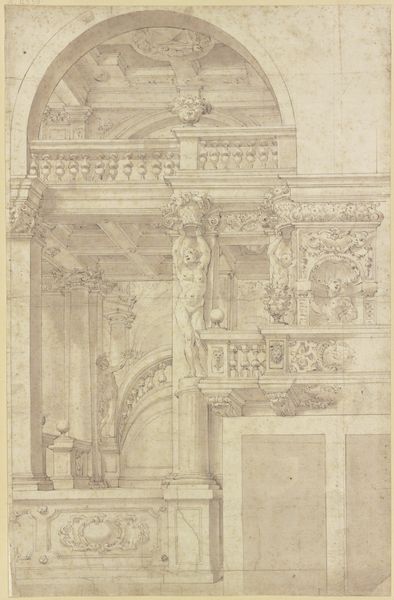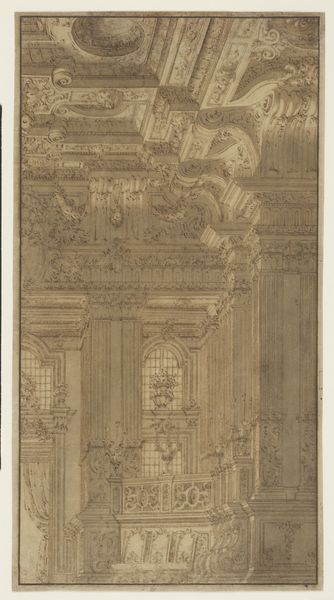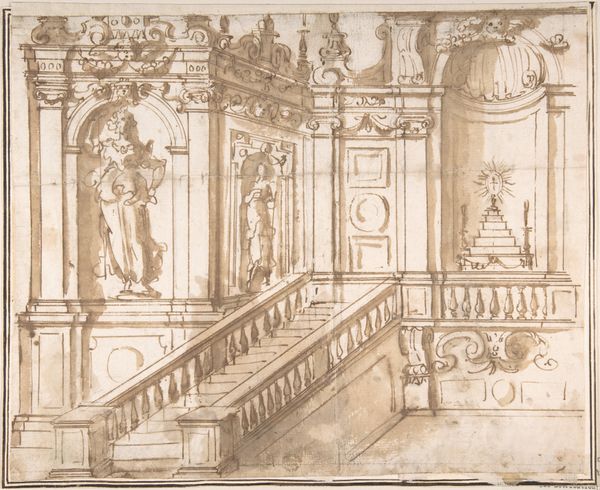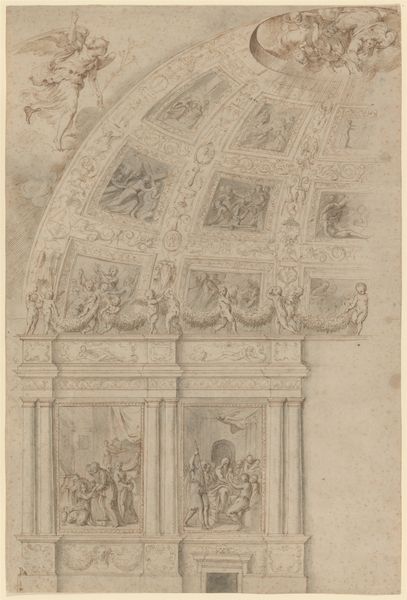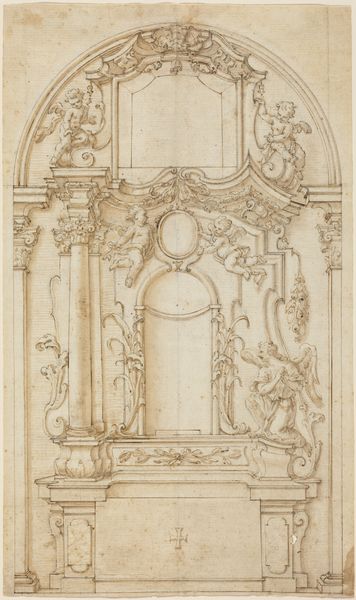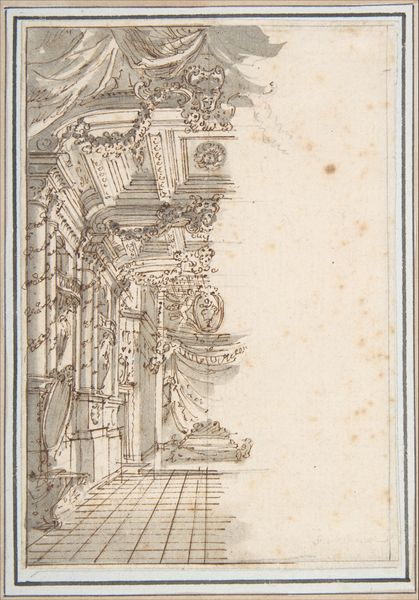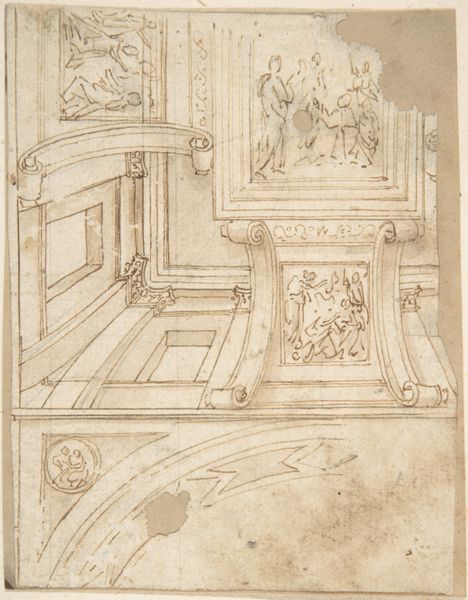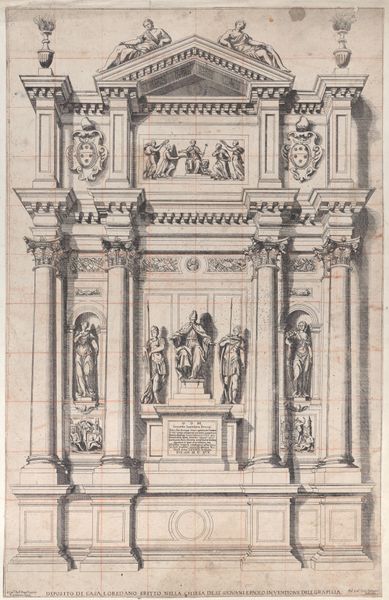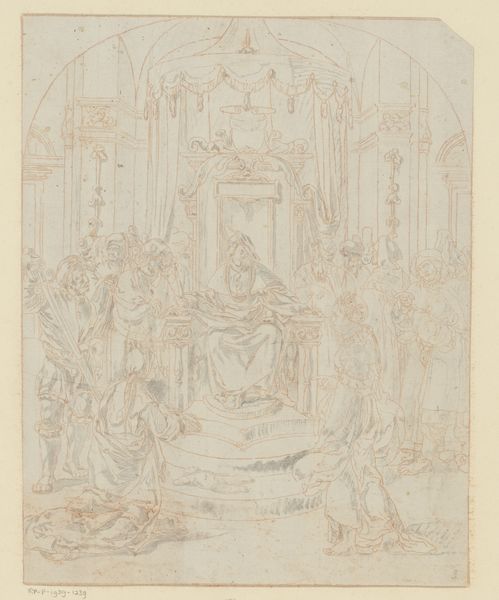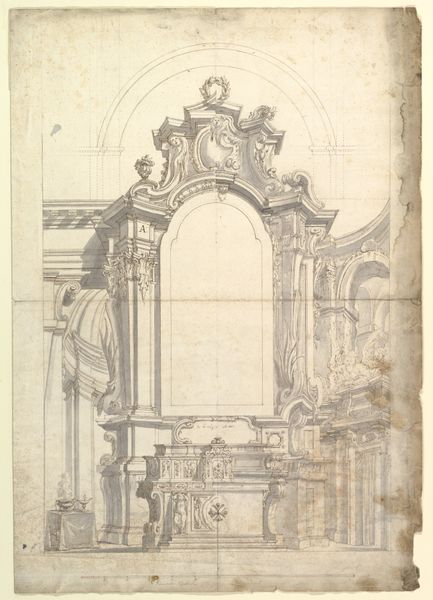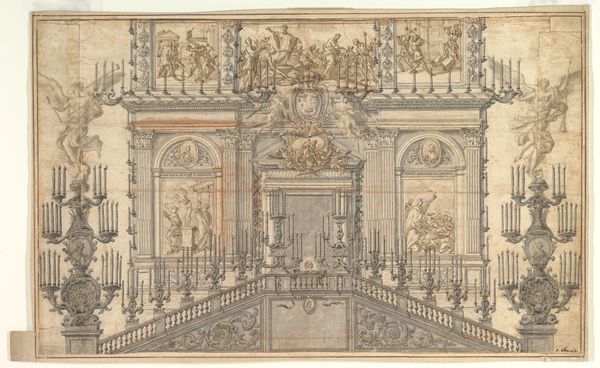
drawing, print, ink
#
drawing
#
narrative-art
#
baroque
# print
#
figuration
#
ink
#
history-painting
Dimensions: 8 3/4 x 6 1/16 in. (22.2 x 15.4 cm)
Copyright: Public Domain
Curator: The work before us, tentatively titled "Esther before Ahasuerus," is believed to have been created sometime between 1670 and 1730 by an anonymous artist. Rendered in ink, this drawing offers a compelling depiction of a pivotal moment. What strikes you initially? Editor: The composition—particularly the rendering of depth—is arresting. The architecture looms, the perspective meticulously guiding the eye. And the repetition of the dog motif along the dais is visually quite intriguing. Curator: Indeed. This depiction focuses on Esther's brave act of approaching the king unbidden to plead for her people. Esther's position, foregrounded and set against the formidable backdrop of the court, immediately signals her vulnerability within the power dynamics at play. Her bravery challenges not only the patriarchal structure but also the very real threat of death for defying protocol. Editor: Focusing on pure form, the architectural rendering is an interesting use of line, but quite conventional. I find more dynamism in the figure of Esther herself. The artist skillfully uses curvilinear strokes to render her elaborate dress, creating a visual contrast against the stricter geometry of the setting. Semiotically, what can we make of the small dogs perched throughout the scene? Curator: Ah, yes, the dogs! Often symbols of loyalty and fidelity, their presence on the steps leading to the king's throne perhaps ironically highlights the very qualities lacking in Ahasuerus's court before Esther's intervention. It's also worth noting the scarcity of other female figures besides Esther, really emphasizing her singular position within a space defined by masculine power. Editor: Fascinating. Now, zooming in on the drapery behind Ahasuerus, you'll notice the dense, almost frenetic, application of ink, markedly distinct from the more sparse treatment of Esther’s garments. What might that juxtaposition signify? Curator: This contrast underscores the opulence and presumed authority cloaking Ahasuerus versus Esther's comparative exposure and individual agency as she steps forward to voice her concern for her people. Editor: It makes you ponder about the artist's intention, really. Focusing solely on the intrinsic elements reveals multiple layers of symbolic meaning interwoven into this baroque-era drawing. Curator: Precisely. The artist, despite their anonymity, clearly engaged deeply with the narrative’s inherent tensions surrounding identity, power, and courage in the face of overwhelming adversity. Editor: Well, considering how the form and content are inextricable in this narrative, both points of view are valid, right? Curator: Right!
Comments
No comments
Be the first to comment and join the conversation on the ultimate creative platform.
